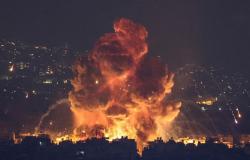Taken by surprise, Israel is in shock. Israeli Prime Minister Benjamin Netanyahu vows to annihilate Hamas, a terrorist organization according to his country, the United States and the European Union, a component of the Axis of resistance to the occupation and colonization of the Palestinian territories by Israel for others.
After intensive bombings on the Gaza Strip, subject to a complete siege, Israel called on October 13 the inhabitants of the city of Gaza (north) to evacuate to the south. The vast majority of the strip’s 2.4 million residents will be displaced at least once during this war. On October 27, the Israeli army launched a ground campaign while diplomacy was active to achieve a pause in the fighting capable of resupplying the territory and freeing some of the hostages.
This one-week humanitarian truce begins on November 24 and allows the release of 80 Israeli or binational hostages, in exchange for that of 240 Palestinian prisoners held by Israel. Also released were 25 foreigners, mostly Thai agricultural workers. The truce allows the entry, from Egypt, of more massive humanitarian convoys, but still insufficient according to the UN. When hostilities resumed, Israeli tanks entered southern Gaza on December 4, where the army increased air raids and ground fighting.
Israel-Hamas war: a young woman captive for ten years in Gaza is finally freed by the Israeli army
Gaza threatened with famine
On February 29, 2024, 120 people were killed by Israeli fire, according to Hamas, during a distribution of humanitarian aid in Gaza City. Israel assures that the convoy was stormed by the crowd and that soldiers “precisely shot several suspects”. At the beginning of March, several countries, including the United States, began airdrops of aid on Gaza, threatened with famine according to the UN. The first aid ship from Cyprus arrived on March 15. Seven employees of the American NGO World Central Kitchen were killed on April 1 in a strike; the Israeli army recognized “a serious error.”
Iran, which supports Hamas, launched an unprecedented drone and missile attack on Israeli territory on April 13, in retaliation for a strike against its consulate in Damascus on April 1, attributed to Israel. On May 29, the IDF took control of the border crossing with Egypt.
Strikes on July 13 near Khan Younes notably killed the head of the armed wing of Hamas, Mohammed Deif, one of the architects of the October 7 attack. On July 20, Israel bombed the Yemeni port of Hodeida, in retaliation for a deadly drone strike on Tel Aviv by the Houthi rebels, supported by Iran. On the Israeli-Lebanese border, exchanges of fire between the Israeli army and the pro-Iranian Lebanese Islamist movement Hezbollah are intensifying.
On July 30, an attack attributed to Israel killed the political leader of Hamas, Ismaïl Haniyeh, in Tehran. Yahya Sinouar, leader of Hamas in Gaza, replaces him. On August 28, Israel launched a large-scale military operation against armed groups in the occupied West Bank. The UN calls for an immediate end to this operation. After the army discovered six hostages dead in a tunnel, pressure mounted in Israel to secure their release.
In Lebanon, on another front of this war, two waves of explosions attributed to Israel of booby-trapped pagers and walkie-talkies, used by members of Hezbollah, left at least 39 dead and nearly 3,000 injured on September 17 and 18. On the 27th, the leader of Hezbollah, Hassan Nasrallah, was killed near Beirut in an Israeli strike. Four days later, Iran launched 200 missiles at Israel.






